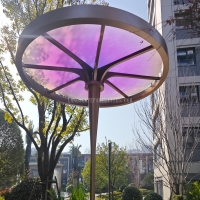Welcome to the website for landscape facilities products and knowledge.
What are the challenges of maintaining wooden landscape tables in termite-prone areas?
Wooden landscape tables add natural beauty to outdoor spaces, but maintaining them in termite-prone areas presents unique challenges. Termites are relentless pests that can quickly destroy untreated or vulnerable wood, compromising both the aesthetics and structural integrity of your furniture.
One major challenge is the constant risk of infestation. Termites thrive in warm, humid climates, making wooden tables in such regions highly susceptible. Even treated wood may lose its protective coatings over time due to weather exposure, leaving it vulnerable.
Another issue is the difficulty in detecting early-termite damage. By the time visible signs like hollowed wood or mud tubes appear, significant harm may already be done. Regular inspections are essential but time-consuming.
Preventive measures like using termite-resistant woods (e.g., cedar or redwood) or applying chemical treatments can help, but these solutions often require ongoing maintenance and may alter the wood's natural appearance. Additionally, eco-conscious homeowners may hesitate to use harsh chemicals.
Finally, moisture control is critical yet challenging. Termites are attracted to damp wood, so proper drainage and sealing are necessary—but rain and humidity in termite-prone areas make this an ongoing battle.
To prolong the life of wooden landscape tables in these areas, combine termite-resistant materials, regular maintenance, and proactive pest control strategies. While challenging, these steps can help preserve your outdoor furniture's beauty and functionality.
Related search:

Recommendation
Metal frame with gradient color acrylic combined with high-end shading landscape facilities